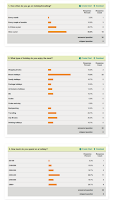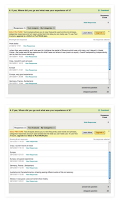- Evaluate the problems that you identified and had to resolve within the brief:
From the start of the course i found that having more than one brief ongoing at a time, was difficult for me as in college i was used to working solely on one brief at one time. As we got more and more into the course i have being able to control this and get used to the fact of this.
Another thing i wasn't used to doing was the design sheet and idea generation, i haven't really taken that much time over them before or if i did it was something i did at the end of the brief, but from being here and working with other around me i found that doing this does make a big difference to your designs, the thought process and experimenting with different ideas can lead to a much better thought out final design, which has been proven. I now take a lot longer over this process of the design cycle and i have found that my work has improved which the majority of this is down to this process.
I still feel that my drawing skills let me down, i have basic ability of drawing but nothing special, i do really want to improve this, as i know it will make me a much better designer, that is something that i want to look at over the summer.
- Evaluate the key considerations that you had to take into account when investigating:
When investigating the brief, the main thing i like to find out first id the purpose of what the final resolutions will be used for, this gives me the whole idea for them to be based upon e.g used for advertising an event, to inform about a subject matter. This also gives me the means of what i need to research in to, to find the right information for the content and for the background information to understand the whole concept of the brief more.
- Evaluate the research activities that you had to undertake in order to resolve the brief:
Throughout the briefs we have done so far this year i have found that research is so important. Before doing the whole OUGD405 module which was a research based module, i didn't realise how important research was, i used to just do it at the end of a brief to make get extra marks! But now i understand it a lot more, spending more time and doing more detailed research makes you understand the whole idea of what the subject matter is, this makes you produce work that is relevant to this, also the content used within my designs make more sense and is in correspondence to the idea of the brief.
- Evaluate the examples of secondary research that informed your design decisions:
Throughout the various briefs we have done, i have used secondary research mainly to look for design work that it similar/in a style i want to work with for inspiration for the brief. I have always done this throughout the time i have been doing graphic design and find it the best way to start the generation of ideas. I find looking at design work that i can use the idea of different elements etc to take into my own work really useful, the only problem with this is that it can sometimes look like copy, but i have never had this experience. In this case the best evidence of this was probably the D&AD brief and the 100 things brief, for both these i looked into work which was of a style i wanted to design around and used certain elements of these within my own work.
As you can see design research that i had found and liked the style of determined the outcome of what my final design looked like.
The other use for secondary research is to get the relevant content for my design work. If i am designing something that needs to have information about a certain subject then i would research into this and find information i could use within my design work.
The content within both of these designs is taken from secondary research online from various sources.
- Evaluate the examples of practical research that informed your resolution:
For some of the briefs we have had to gather information that acts as feedback or content for the work in which we are creating, or in some cases it can determine what the outcome of my work would be. The best example of this would be in the module '100things', i did a survey for this module to gather information that would back up my idea, i wanted to find out information about travelling and if people have had experiences of this. The information from this survey gave me the idea for my finished solutions but also provided some content for part of it too, so surveys are a good way in finding primary research.


Other forms of practical research i have undertaken throughout the year include photography, looking at relevant books to do with the given subject and looking at books on my iphone etc. For primary research in any brief i try to vary the type of information i look at, be that video, books, online, interactive, I think from varying the type of media you look at can generate more ideas and make you think of different ways in which you can design.
- Evaluate the breadth of initial ideas that you generated in response to the brief:
As i have in the first question, when i first started this course my idea generation and initial ideas was pretty poor, as before i never really took much notice in these, i used to just get an idea and run with that straight away, i also saw them as a chore to do and found them boring. Since being here i have seen that use of design sheets are very important and experimenting with ideas at the being is essential as this can generate more ideas in the first place or experimenting with two different ideas can make a better final outcome. Now i wouldn't imagine not doing design sheets, i see them as the essential part to the brief and i now rattle off more and more each brief!
This was some of my design sheets that i did just for the first crit, before i had decided on the actual idea and before experimenting with these ideas.
- Evaluate the breadth of visual investigation that you have explored before deciding on your design direction:
Visual investigation is something that i like to do right at the start of a brief, even before i have come up with any sort of idea. This in itself i see as a process of idea generation. I have done this all the time throughout studying graphic design, its just something i picked up and kept on doing all the time. When i first get a brief, i always go and look at visuals on design blogs, designers websites that could be linked in some way to the brief or even just for inspiration on the style of work i think could be interesting for it. From this i start my idea generation and then once i get the idea i go back and find more visuals that are connected to the subject i want to produce my final resolutions on.
Even when we don't have a brief or something that I'm not designing i like to just look through design sites and blog and look at work that is out there being produced, its something i do in my spare time to keep my mind ticking over on stuff like this, its the majority of the stuff that i find that give me the ideas for most of design work i do.





























































